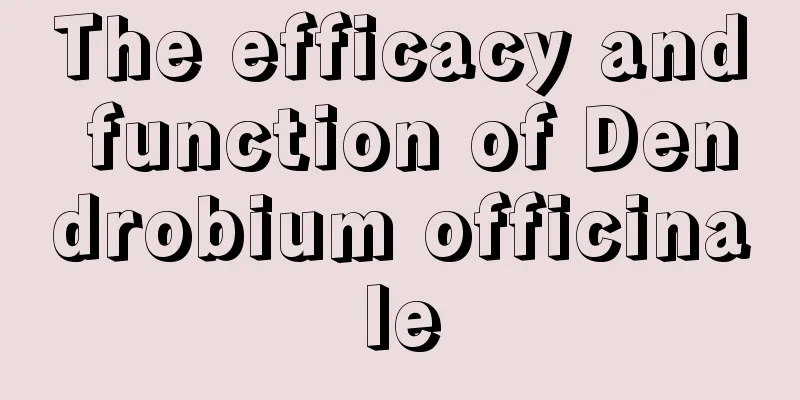The efficacy and function of Dendrobium officinale

Effect: MedicinalAs a plant of the Dendrobium family, Dendrobium officinale is also a medicinal herb. Red Dendrobium has most of the effects of Dendrobium, and Dendrobium contains alkaloids such as dendrobine, mucus, starch, etc. It has certain antipyretic and analgesic effects; it can promote gastric juice secretion and aid digestion; it has the effects of enhancing metabolism and anti-aging. It can be used for low-grade fever, thirst, dry tongue, sore throat, and even some kidney diseases. It has good medicinal effects and minimal side effects, making it suitable for regular consumption. Dendrobium officinale is an excellent medicinal material. The effects of benefiting the stomach, promoting body fluid, nourishing yin and clearing away heat have been recorded in ancient books. Dendrobium and Polygonatum odoratum both have the effect of nourishing yin and promoting body fluid, and their functions are similar. Polygonatum odoratum is more common in our lives, especially from the perspective of traditional Chinese medicine, so we can also learn more about the role of Dendrobium officinale through them, and fully understand and become familiar with its existence and value. However, it should be noted that people with weak spleen and stomach cannot eat Dendrobium. Function: ornamentalWhenever we talk about the uses and functions of ornamental flowers, we always start from the perspective of appreciation. The red Dendrobium has elegant flowers, cute and exquisite shapes, bright colors and fragrant smell. It is known as one of the "four major ornamental foreign flowers" and is a very good potted plant and cut flower material. This genus of plants is believed to be "strong-willed, loyal and amiable" and people in Western society often dedicate it to their beloved elders. On June 19th of every year, people give Dendrobium to their fathers, and it is called the "Flower of Father's Day". Dendrobium officinale has the flower language of "Welcome, dear". It can be made into a corsage with gerbera and eucalyptus and worn on the chest. In Europe and the United States, dendrobium flowers are often used to make corsages, paired with dianthus and asparagus, to express "welcome". To this day, it is widely used in large banquets, opening ribbon-cutting ceremonies or entertaining VIPs. |
<<: Forget-me-not flower language: eternal love, deep friendship
Recommend
Why do the leaves of the money tree become soft? Let me teach you a trick to revive it!
1. Reasons 1. Sunlight: It likes light, but can t...
Is the copper coin grass the money grass? What is the difference between the copper coin grass and the money grass?
1. Is it money grass? Pennywort is not Money Plan...
Do daisies prefer shade or sun?
Do daisies prefer shade or sun? Daisies are easy ...
The shaping, pruning and flowering period control of Rhododendron ovata
Plastic pruning In order to make the plants grow ...
The environmental conditions and characteristics of the growth of Oyster mushroom
Environmental conditions and requirements for the...
Cultivation methods and precautions of Cistanche deserticola
Site selection First of all, we need to choose a ...
What soil substrate should be used for growing Dendrobium?
The soil environment in which Dendrobium grows is...
What flowers are used for worship?
1. Chrysanthemum The most commonly used flowers f...
What is nitrogen fertilizer?
1. Common types 1. Ammonium nitrogen fertilizer: ...
What to do if the leaves of Huayueye wither
Why do the leaves wither on a moonlit night? The ...
Can gourds be planted in pots?
Can gourds be planted in flower pots? Gourds can ...
How many days does the carrot growing period last?
The growth process of carrots starts with sowing ...
The cultivation methods and precautions of Tongtuo Wood
1. Soil The soil conditions of the thunbergia ova...
What fertilizers are needed for Milan fertilization? Milan fertilization method
1. Fertilization time The time to fertilize Milan...
How to save sword bean seeds
How to save sword bean seeds Sword bean is a plan...









